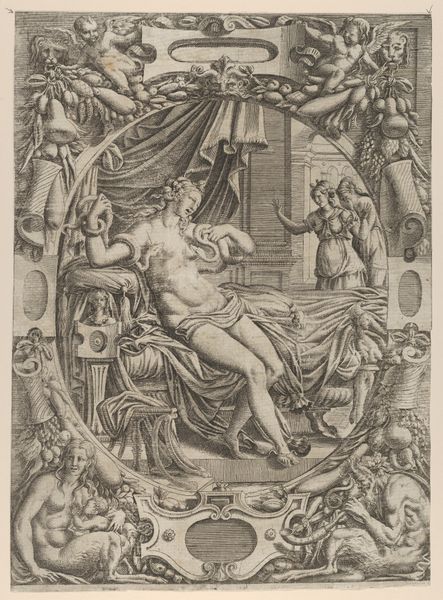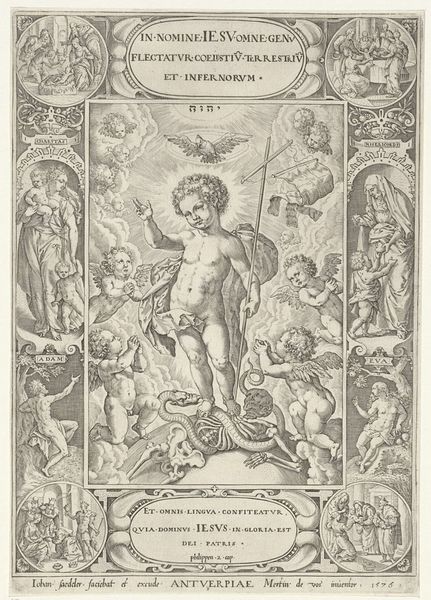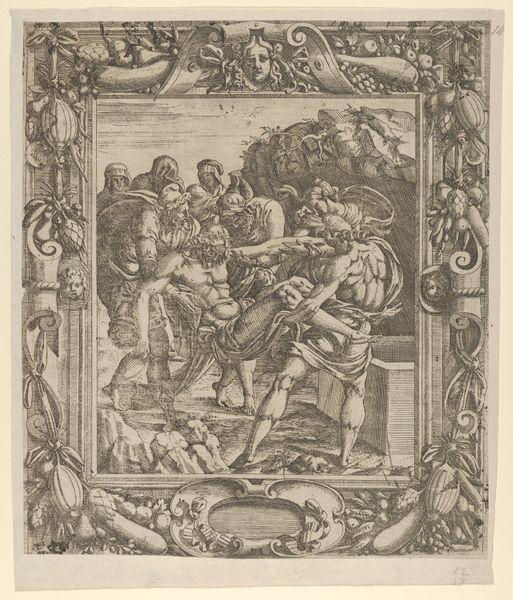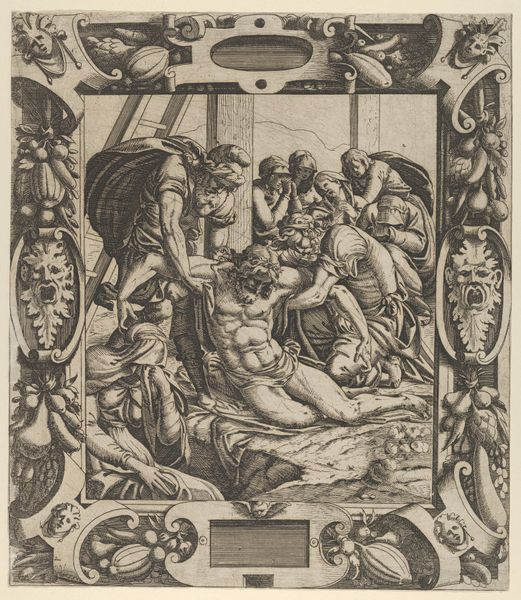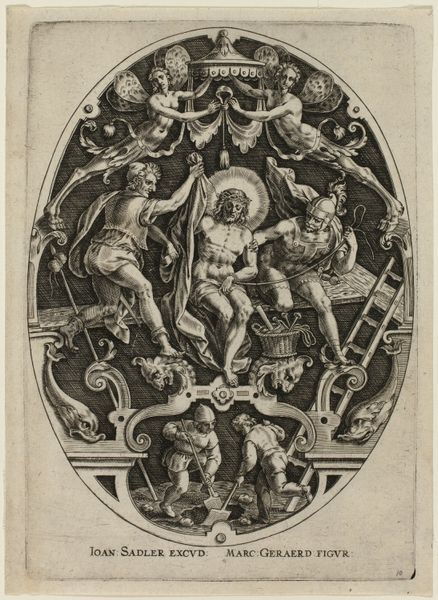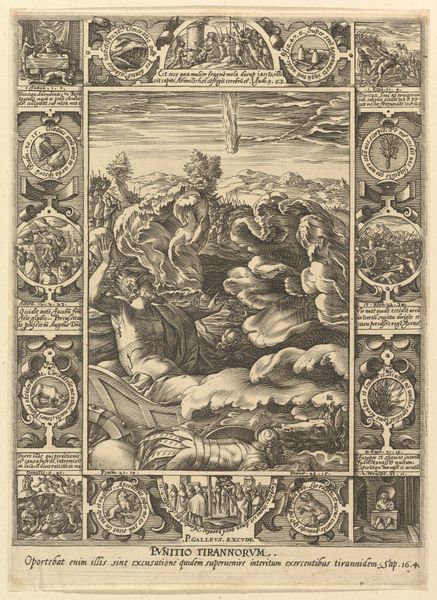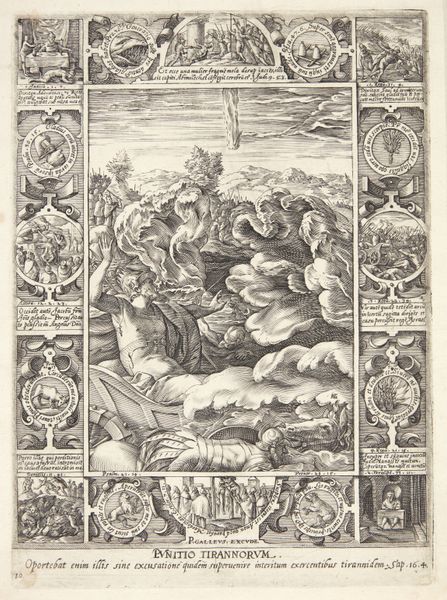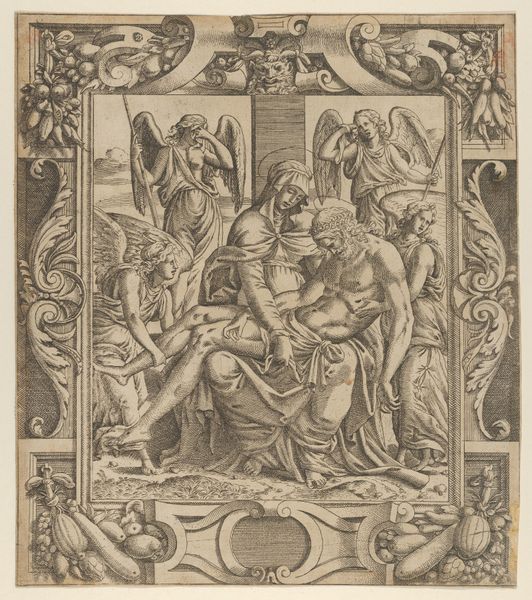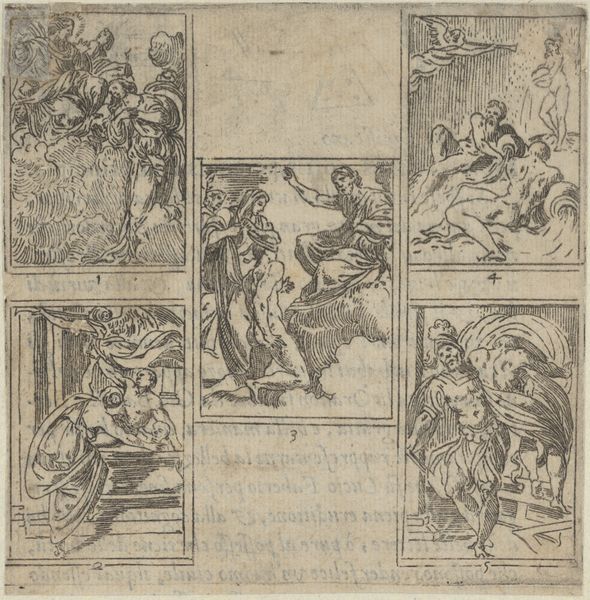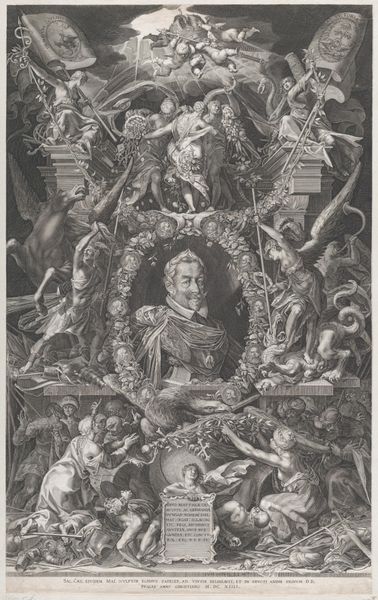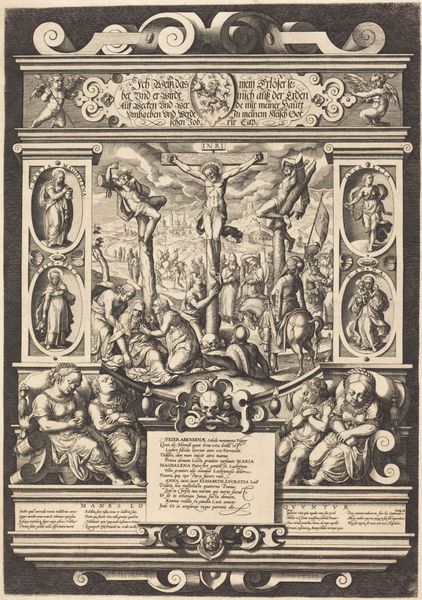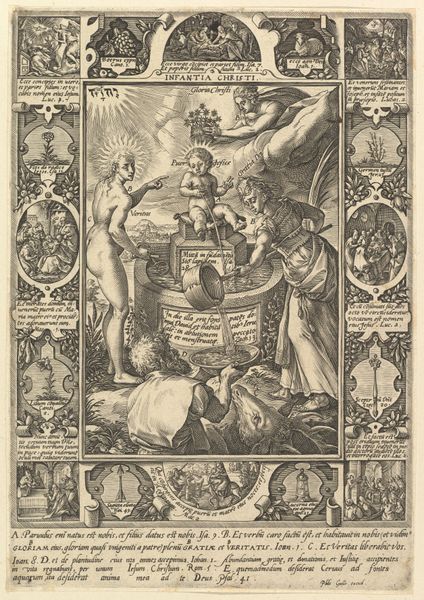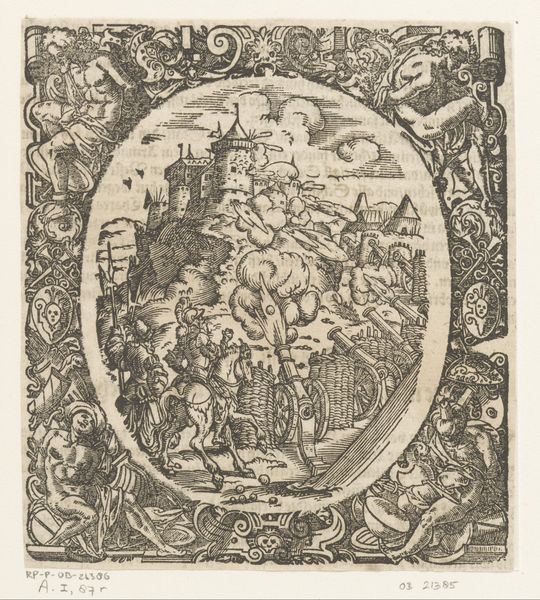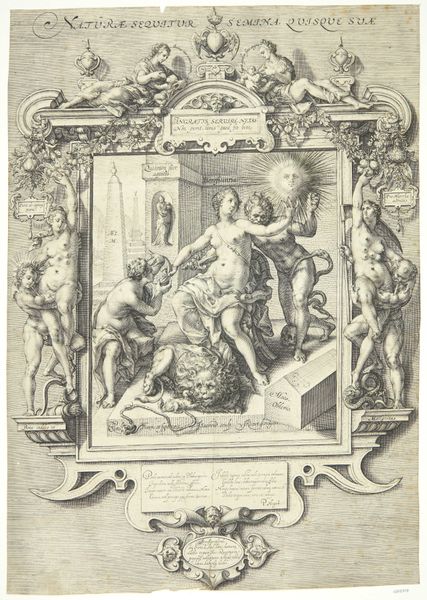
print, engraving
#
allegory
# print
#
old engraving style
#
mannerism
#
figuration
#
form
#
history-painting
#
engraving
Dimensions: height 414 mm, width 338 mm
Copyright: Rijks Museum: Open Domain
Curator: Welcome to the Rijksmuseum. We're standing before a fascinating engraving, "Allegorie op de complexiteit van de mens," or "Allegory on the Complexity of Man," created by Wierix in 1579. What are your initial thoughts? Editor: Well, first of all, the composition strikes me as incredibly dense. The artist has crammed so much detail into a relatively small space. The interplay of light and shadow created by the engraving technique is masterfully done, lending the image a stark, almost theatrical feel. Curator: Indeed. The central figure, seemingly an idealized man, reclines amidst a rather unsettling menagerie: a lion, a sheep, a dog, even a skull with a snake slithering around it. To me, it feels almost alchemical, referencing an inner conflict between virtue and vice. Editor: I agree about the unsettling quality, yet there’s an undeniably powerful juxtaposition at play, contrasting these primal elements to capture the multifaceted human condition. Observe how Wierix uses line weight and hatching to delineate each form, almost scientifically dissecting them with the burin. It’s reminiscent of Durer’s prints. Curator: I see that. The engraving teems with references to human nature's struggles. Each animal could represent a conflicting aspect: the lion, power; the sheep, innocence; and, of course, the skull, mortality. These aren't just decorative flourishes, they're deeply rooted symbols from Christian moralities. Editor: I hadn't considered the morality aspects of this complex interplay, as the various framing vignette's create an incredible textual density to unpack the artwork. The roundels depicting people in different scenes appear in the artwork's upper and lower areas, thus giving further allegorical interpretations about this human struggle that it seems so adamant about depicting. Curator: I agree. There are layers of meaning at work here, constantly reflecting our multifaceted natures back at us and this print has always served to capture our own natures. The inscription provides one context while its representation can bring more nuances through its framing. Editor: Well, looking closely and engaging the details has created even more appreciation for the artist’s ability to weave so many compositional and symbolic elements together in such a unified, yet emotionally complex work of art.
Comments
No comments
Be the first to comment and join the conversation on the ultimate creative platform.
